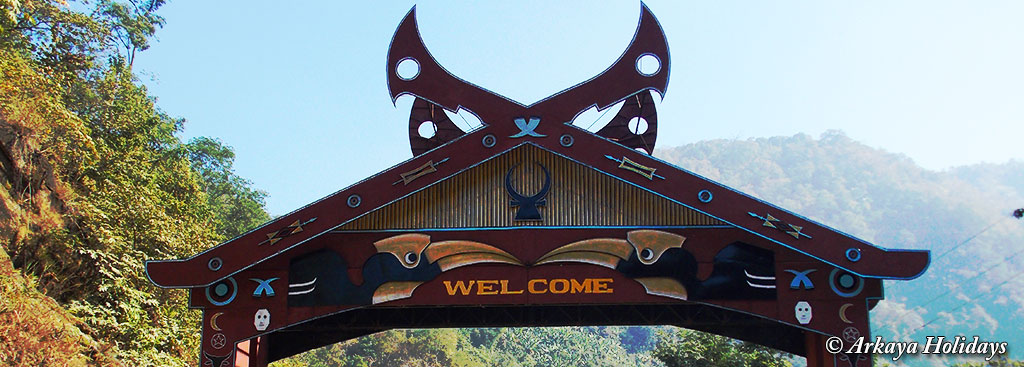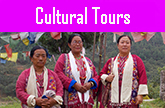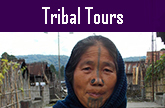Nagaland Tourism Places
Dimapur
Dimapur, the gateway of Nagaland is designated to be the largest city in Nagaland, popularly known as the "City of River People". 'Dimapur' is a derivation from Kachari dialect in which 'di' implies river, 'ma' meaning great and 'pur' means city, together meaning "the city near the great river". This city, situated at an altitude of 475 feet above mean sea level is the most developed and industrialized area of the state.
Medieval Ruins of Kachari Kingdom:
Dimapur holds the status of being the ancient capital of Kachari tribe who ruled the state before 13th century. The glory of the Kachari kingdom appears on the ruins spread around Dimapur. The ruins provide evidences of the Kachari civilization reflecting a touch of Hinduism who were pre-dominantly non-Aryans.
Diezephe Craft Village:
The village exhibits trained weavers and craftsmen skilled in wood carvings, bamboo and cane works. In recent times, the village has developed in this field of art expanding the variety of handloom and cane products with the assistance of Nagaland Handloom and Handicrafts Development Limited.
North East Zone Cultural Centre Museum:
This cultural centre set in a well conditioned museum organizes various cultural programs in and outside the state. Centre aims at the cultural promotion of the state and provides ample scope for tourists desiring to gain knowledge and information about the various cultural heritages of North Eastern people.
Kuki Dolong Village:
Kuki tribe = This portion of the page is under construction
Kohima
The capital city of Nagaland, situated at an altitude of 4738 feet above mean sea level is encompassed by hills providing a majestic beauty to the city. The name 'Kohima' has been derived from Tenyidie dialect 'Kewheimia' meaning "people living in the hills". Kohima received its present name from the British rulers who had set up colonial units devastated during the Second World War. Kohima city is inhabited by the Angami, Rengma, Kuki and Zeliang Naga tribes. It is a beautiful hill station of North-East India beckoning the tourists to its religious, monumental and village attractions.
Khonoma Green Village:
Khonoma village is the homeland of the Angami tribe. This 700 year old village also referred to as 'Khwunoria' by the inhabitants holds a historical record of a brave resistance made by the Naga warriors against the British in 1879 AD. The presence of a fort called 'Kuda', meaning "a place of defense" is a unique feature of this village. The villagers practice terrace farming of Alder trees which exhibits their skill in management of terraced cultivation. This farming fixes nitrogen in the soil which controls soil erosion. This step towards 'eco-tourism' has heightened the mission of "Green Khonoma" in the village.
Kohima War Cemetary:
It is a war memorial set in the honour of those valorous soldiers and officers who sacrificed themselves during the Second World War. The cemetery, earlier known as 'Garrison Hill' is maintained by the Commonwealth War Graves Commission. Sir Edwin Lutyens was the principal architect of this cemetery. There stand 1421 magnificent stone graves of the brave soldiers killed in the battle of Kohima in April, 1944. Of these, 1070 graves are of soldiers from United Kingdom, 5 Canadian soldiers, 3 Australian soldiers, 33 graves of undivided India, 2 graves of East African soldiers, 1 from West Africa, 9 Burmese soldiers and a single non-war grave. Each grave bears an appropriate epitaph engraved in bronze. Historians regard the Battle of Kohima as "one of the bitterly fought battles of the Second World War". The British before departing Kohima had erected a heart touching inscription inside the memorial in the memory of brave comrades which reads: "When you go home, tell them of us and say: FOR YOUR TOMORROW, WE GAVE OUR TODAY."
Kohima village:
Kohima village, also known as Bara Basti is considered as the second largest village in Asia. It is also one of the most densely populated villages in the continent. Legend narrates that the village was set up by a man called Whinuo Kewhira. Kohima village is grouped into 4 khels namely Dapfutsuma, Lhisema, Pfuchatsuma and Tsutsonuoma. Several clans are brought together within the village community by the institution called 'khel' which governs the entire village. The membership of a khel depends on two aspects - birth or heredity. The ancient Kohima village was believed to possess 7 lakes along with 7 gateways. The main entrance of the village is set with a traditional wooden gate carved in traditional Naga art and decorated with horns of gayal (mithun) reflecting the glory of the ancestors of the village.
Catholic Cathedral:
The Catholic Cathedral standing on the Aradurah Hill is acclaimed as the largest cathedral in entire Asia. The birth of this cathedral took place after the battle of Kohima in the Second World War. It was established with an aim to offer prayers in loving memory of the sacrificed soldiers by Japanese survivors of the war. The cathedral covers a huge area of 25,000 sq feet showcasing a mixture of both modern and native architectural treat.
Sales Emporium:
The Sales Emporium houses a wide collection of Naga handloom and handicraft items. Such handloom articles are also available in private outlets such as Gurtal (near war cemetery) and Belho Weavers (beside Assam Oil Company).
Tuophema Tourist Village:
An Angami Naga village, Tuophema tourist village was set in 1431, initially named after the 'Erithrina' tree. There was a belief among the villagers regarding the holy presence of the tree which they believed would make them victorious. Renowned as an eco tourist village, it is regarded as a model village under the Village Development Board covered by lovely cottages due to the proper execution of the village development programmes. Besides, The Nagaland Tourism Department has selected this village for the celebration of the Angami - Naga Sekrenyi festival celebrated during 25th - 27th February every year.
Wokha:
The term ‘Wokha’ literally means census. Wokha is the homeland of the Lotha tribe as well as the district headquarters of Lothas, set amidst terraced fields, blooming bright flowers and picturesque surroundings. This village is highly acclaimed for its fertilizer and pesticide free cultivation of oranges and pineapples. The main attractions are the presence of ancient stone monoliths, constructed by tribal elders. Lothas are known for their colourful dances and songs.
Longsa Village:
This portion of the page is under construction
Tseminyu village:
Rengma tribe = This portion of the page is under construction
Mokokchung
This portion of the page is under construction
Longkhum village:
Shrouded in full-bloomed Rhododendrons around the hillocks, Longkhum village is famous for exquisite ethnic handlooms and handicrafts. The village dwellers follow an animist religion called ................. and worship a God called Longlanpa Tsungrem.
Mopungchuket village:
Mopungchuket village is the homeland of the Aao Nagas. Beautiful traditional communal Naga houses named as Morung are found here. The inhabitants of the village are visitor-friendly and hospitable. This tribe celebrates numerous harvest festivals each year.
Ungma Village:
The Ungma village is the exact destination of tourists interested in unique folklore, customs and traditions of Ao Nagas. It is the oldest and largest of all the Ao Naga villages and the second largest village in Nagaland next to Barabasti village of Kohima. The homeland of the Ao Nagas, this village has nurtured the rich Ao culture and traditions which is still prevalent among the villagers. Ungma village occupies a unique position in the history of the Ao Nagas for it is said that the Ao tribe founded this village when they first entered the land from their ancestral home at Chungliyimti.
Tuensang
This portion of the page is under construction
Tuensang village:
This portion of the page is under construction
Mon
Mon is the homeland of the former head hunters, the Konyak Nagas. They are well equipped with the skill of craftsmanship in wood carvings, guns, gunpowder, headgears and metal ornaments. The presence of semi traditional villages and tattooed warriors in loin cloths is the famous attraction of Mon.
Chui village:
This portion of the page is under construction
Shangnyu village:
Shangnyu village, considered as one of the prominent villages in Mon district is ruled by the Chief Angh. History speaks of amiable relationship between Shangnyu and Angh kings. The responsibility of collection of taxes rested on the Shangnyu Angh. Their collection areas used to comprise of villages starting from Sibsagar in Assam to the Wanchos in Arunachal Pradesh. The main attraction of this village is a huge and unique piece of wood carving of the metallic age measuring ……………… , placed in a concrete museum at the entrance of the Angh’s house. This wonderful wooden monument engraved in human and other creature’s carving is about 500 or 600 years old and is believed to be constructed by two brothers with the help of heavenly spirits.


















